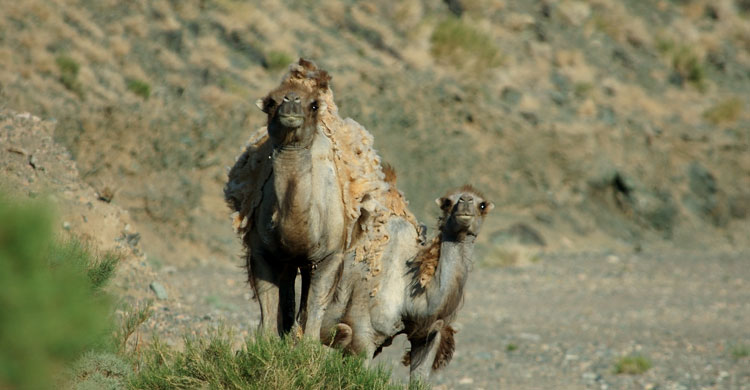Launch of Central Asian Mammals Initiative to Save the Last Migrations

Wild Camel © Petra Kaczensky
Quito, 6 November 2014 - The Central Asian Mammals Initiative has been presented on the occasion of CMS COP11 on 6 November in Quito, Ecuador.
At a side event, the new publication “Central Asian Mammals Initiative: Saving the Last Migrations” was launched. It provides an overview of threats to large mammals and their migrations and features conservation solutions.
Central Asia harbours the largest intact and still interconnected landscapes worldwide. It is also known as the "Serengeti of the North” for the mass migrations and long-distance movements of Mongolian Gazelles, Asiatic Wild Ass and Saiga Antelopes. The region is one of the world’s last remaining hotspots of large ungulate migrations because of its vast steppe, desert and mountain ecosystems, which are indispensable for wildlife and provide essential ecosystem services.
However, those migrations are in peril as poaching, illegal trade, habitat loss, infrastructure development and barriers, as well as disease and climate change are threatening their very existence. Addressing these threats requires science‑based and internationally coordinated conservation measures across Range States to ensure the survival of the species, their migrations and habitats, as well as sustainable benefits to people.
The Central Asian Mammals Initiative (CAMI) was developed under CMS to provide a strategic framework for the conservation of migratory mammals in the region. The initiative targets eleven CMS-listed species and four other Asian long-distance migrants which might benefit from inclusion on the CMS Appendices. The distribution of those species covers 14 countries, eight of which have ratified the Convention (India, the Islamic Republic of Iran, Kazakhstan, Kyrgyzstan, Mongolia, Pakistan, Tajikistan and Uzbekistan), and another six countries are not yet CMS Parties (Afghanistan, Bhutan, China, Nepal, the Russian Federation and Turkmenistan).
CMS through the CAMI can support countries in those efforts and bring all stakeholders together to coordinate and agree on key actions. The Convention has the potential to act as a catalyst for wildlife conservation beyond borders.
Last updated on 08 November 2014





